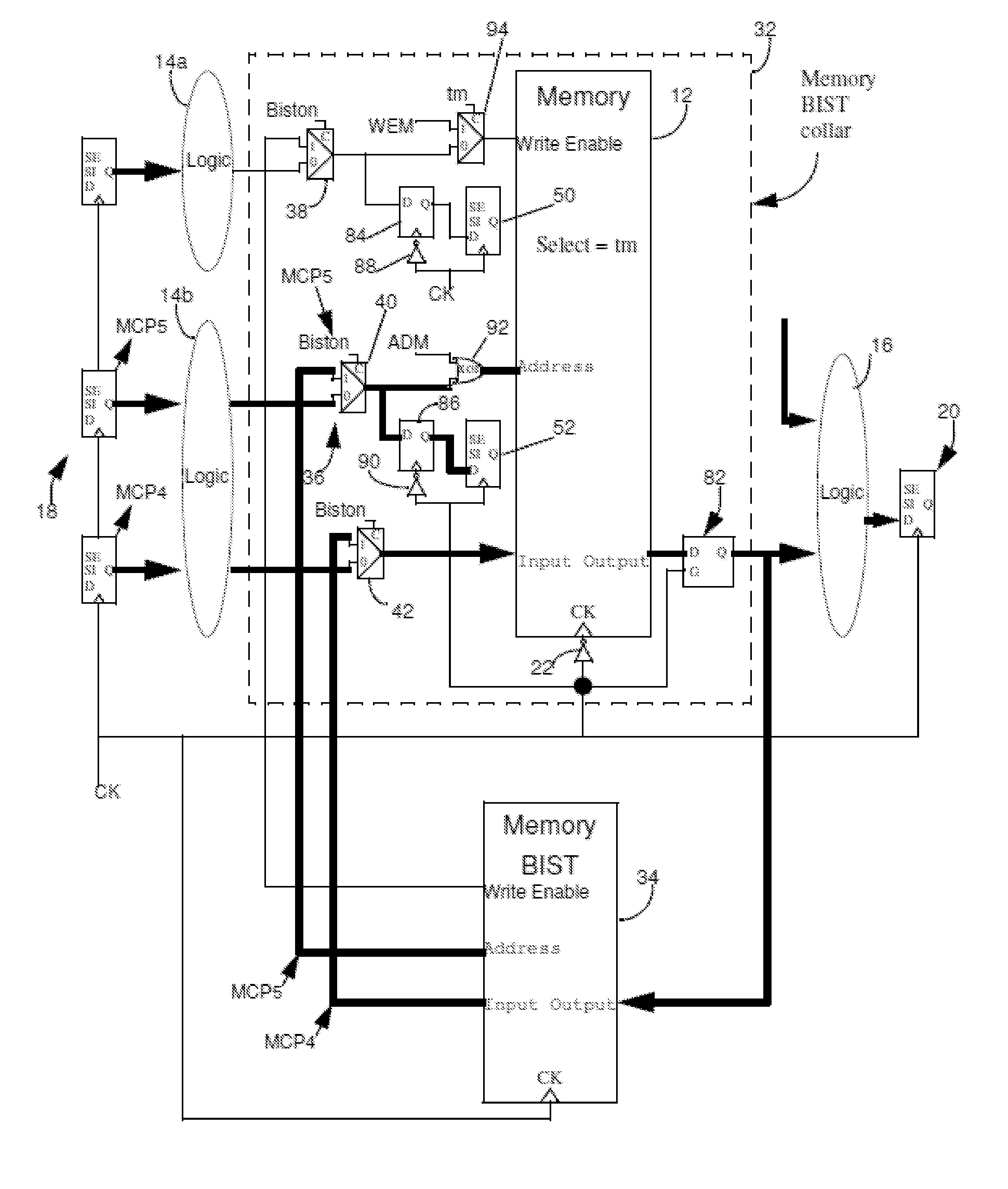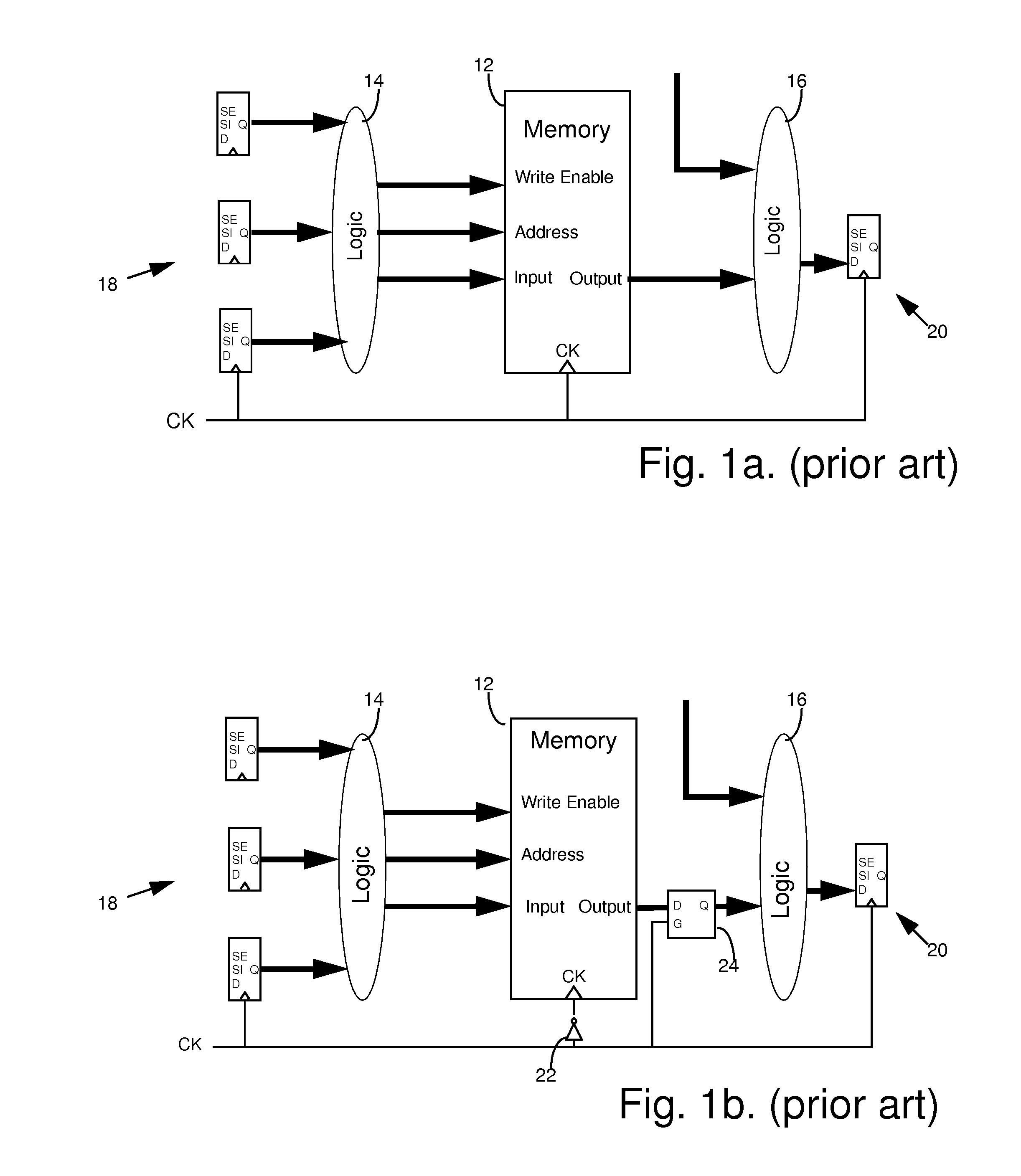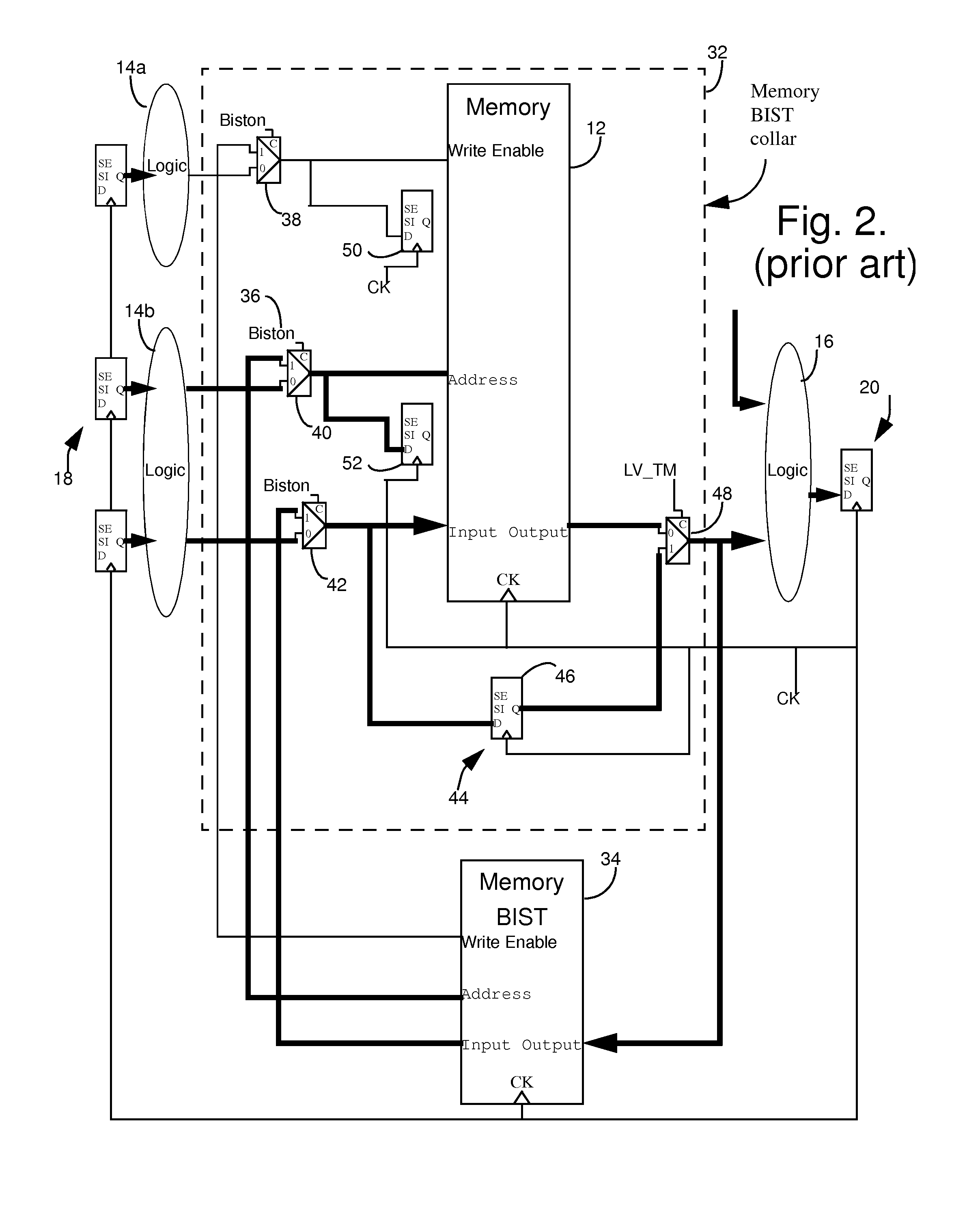Methods For At-Speed Testing Of Memory Interface
a memory interface and at-speed testing technology, applied in the field of integrated circuit testing, can solve the problems of avoiding detection of subtle delay faults, reducing the accuracy of the output side of the memory, and reducing the accuracy of the test of the memory side, so as to reduce the power supply fluctuations, the effect of eliminating the test-dedicated circuitry
- Summary
- Abstract
- Description
- Claims
- Application Information
AI Technical Summary
Benefits of technology
Problems solved by technology
Method used
Image
Examples
first embodiment
[0053]FIG. 6 illustrates a test interface for use in a circuit in which functional circuit modifications are permitted. The figure shows a circuit with an out-of-phase circuit configuration which includes an inverter 22 applied to the memory clock input and a transparent latch 82 for each memory output. The output of the transparent latches are applied to the output logic 16 and to inputs labeled “output” of memory BIST circuit 34. As in FIG. 2, each of the outputs of output logic 16 is applied to the data input of a corresponding scannable memory elements 20 of the output scan chain.
[0054]Retiming memory elements 84 and 86 are connected to the outputs of the test interface input muxes 38 and 40 associated with the write enable input and address inputs, respectively, of the memory and observation logic 50 and 52 provided for the write enable and address inputs of the memory. The clock inputs of latches 84 and 86 are inverted by inverters 88 and 90. Retiming memory elements 84 and 86...
third embodiment
[0070]Advantageously, these embodiments of the invention typically do not require functional changes to the memory circuit. This has several implications. First, there is no need to reduce at-speed coverage of other destinations. Second, it is applicable to more circuits (e.g., where the data and / or address is provided by another memory). Third, there is no introduction of asynchronous loops or redundant faults. Fourth, it has reduced combinational depth; the memory output is directly controllable from a set of dedicated registers and limit the combinational depth of the circuit as compared to the embodiment of FIG. 6 and there are no combinational paths that traverse the memory. Fifth, there is no need to modify the BIST controller itself except for the address counter in the illustrated examples. This requirement can be relaxed by using the address observation flip-flops to provide the address. This is discussed in more detail in the description of the third embodiment below. Sixt...
PUM
 Login to View More
Login to View More Abstract
Description
Claims
Application Information
 Login to View More
Login to View More - R&D
- Intellectual Property
- Life Sciences
- Materials
- Tech Scout
- Unparalleled Data Quality
- Higher Quality Content
- 60% Fewer Hallucinations
Browse by: Latest US Patents, China's latest patents, Technical Efficacy Thesaurus, Application Domain, Technology Topic, Popular Technical Reports.
© 2025 PatSnap. All rights reserved.Legal|Privacy policy|Modern Slavery Act Transparency Statement|Sitemap|About US| Contact US: help@patsnap.com



